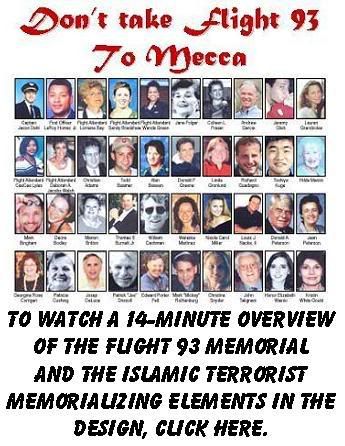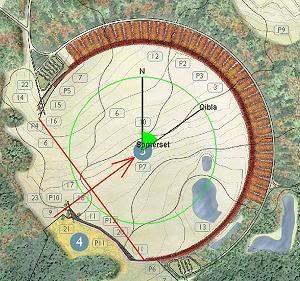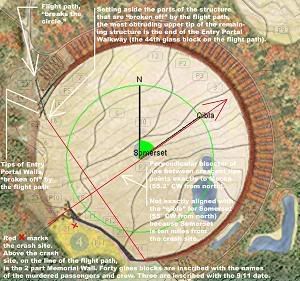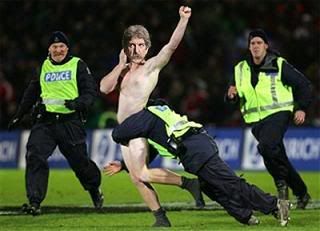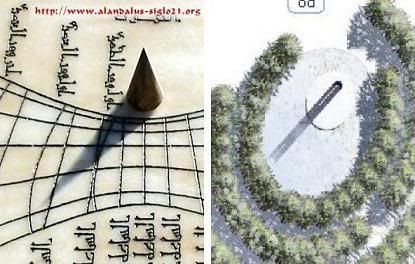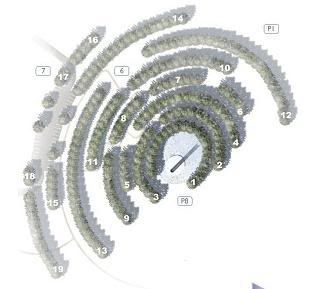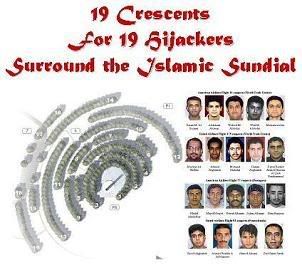Before I begin: You’re stationed aboard and “auxilary” vessel. Your bretheren of the “black shoe” Navy don’t consider your ship a “combatant,” but fight like you are one when the time comes… Don’t miss this tale in Sunday Ship History!

Today:
Lieutenant Commander William R. Hoel, a riverboat pilot and ship captain in the Civil War. Joining the US Navy in 1861, William Hoel served 4 years in the Navy during the Civil War. Beginning his combat career as First Master of the gunboat
USS CINCINNATI>, he particpated in the
Battle of Ft Henry on the Tennessee River. Wounded in that battle, he helped achieve an early victory under the forces commanded by BG U.S. Grant.Two months later, William Hoel volunteered to pilot the
USS CANONDELET to run past Confedrate batteries at
Major General John Pope’s forces. This action allowed the opening of the Mississippi River for use bu Union gunboats.
Taking command of USS PITTSBURG in Ocotber, 1862, Hoel’s gunboat played a significant role in the Wikipedia:
On 29 April 1863, as Acting Rear Admiral David D. Porter’s flotilla was bombarding the Confederate Batteries at Grand Gulf, his flagship, USS Benton, became unmanageable and was caught under heavy fire in a position where she could neither steer nor reply to the enemy guns. On seeing Porter’s predicament, Hoel slipped the Pittsburg in between Benton and the flaming Rebel batteries to protect her by taking the fire himself. In the next 10 minutes his heroism cost the Pittsburg 6 men killed and 8 wounded, but the sacrifice allowed Benton to extricate herself from the deadly trap.

The first vessel named in honor of William Hoel was the USS HOEL (DD-533), a ship of the
FLETCHER Destroyer Class. Commissioned July 29th, 1943.Serving at Tarawa, in the Marshal Islands, the Admiralty Islands, and Palau before her final battle, and the most significant for the US Navy, naval history and her crew,
the Battle off Samar on Oct 25th, 1944:From the Battle Off Samar website:
Leyte Gulf/Samar – 17 – 25 October 1944
On 12 October HOEL was assigned to Task Group 77.4 for the invasion of the Philippines. Her task unit consisted of COMCARDIV 25’s four escort carriers and two FLETCHER Class destroyers, veterans HEERMANN and JOHNSTON. Their group was then joined by COMCARDIV 26’s two CVE’s and their screen of four destroyer escorts, completing the task unit Taffy III.
Taffy III, one of three task units assigned to Task Group 77.4, was stationed off the coast of Samar. Here, from 17 to 25 October, they conducted daily air support operations for the amphibious landings on Leyte.
COMCARDIV 25 under fire #1Shortly after sunrise on the morning of 25 October, HOEL and Taffy III were set upon by the vastly superior Imperial Japanese Navy Center Force. As 18-, 16-, 14-, and 8-inch shells fell among the American Task Unit, HOEL and the other screening ships laid protective smoke in defense of the escort carriers.
In the words of survivor Glen E. Foster, an Electrician’s Mate Second Class, “….When GQ was sounded I took my station (in the emergency generator room) and donned the sound powered phones and heard that the whole Jap fleet was out there. Shortly thereafter we took a hit that knocked out the aft generator. The emergency diesel generator next to me started up and I was kept busy providing emergency power. I felt numerous hits that shook the whole ship and water started flowing into the compartment . . . . we tasted the water and found it to be fresh water so we surmised that a tank or pipe had sprung a leak . . . . by this time communications had been knocked out and I had no idea what was happening topside except I kept feeling the ship taking hits and I could hear and feel our forward guns firing…
….While I was working in front of the switchboard a hit into the forward fireroom buckled the bulkhead and knocked the switchboard onto me . . . . steam started pouring into the compartment. It was then I decided it was time to get the hell out…”
Although out-gunned by the heavy Japanese warships, HOEL was ordered to attack with torpedoes. The actions that transpired next are best explained by HOEL’s senior surviving officer, LT Maurice F. Green, USN, “….We decided to fire a half salvo at the leading battleship and save the other half for the leading cruiser because it was definite that we would have to turn at least two columns of ships in order to be of any assistance in screening the CVE’s. . . . At 0725 we received the first hit on the bridge which destroyed our voice radio communications and also the remote Radar PPI on the bridge. This shell also killed several bridge personnel…helmsman, captain’s talker… It was less than five minutes later that we received a hit on the main battery director putting it out of action and also killing our anti-aircraft officer, making it necessary for the anti-aircraft guns to go into local control. We had an officer at each 40mm AA mount…there was nothing within range of the 40mm’s to fire at…”
COMCARDIV 25 under fire #2At 9,000 yards, HOEL fired five torpedoes at the IJN battleship KONGO, all missed. It was shortly after this point that she was hit on her bridge. With one engine lost, HOEL’s speed was reduced to about 17 knots. She then turned to engage the heavy cruiser line. Shortly after 0750, HOEL launched her five remaining torpedoes at the IJN heavy cruiser HAGURO, scoring at least one hit.
Once again, LT Maurice F. Green, USN, “With our ten fish fired we decided it was time to get the hell out of there…this proved impossible because we were boxed in on all sides by enemy capital ships. We fishtailed and chased salvos and made all possible speed on one engine which enabled us to continue to remain afloat… The Jap battleships were 8,000 yards on the port beam. We had heavy cruisers 7,000 yards on the starboard quarter and we had only two guns left to fire. They were forward which made it difficult to continue firing while attempting a retirement…”
HOEL had suffered major material damage during her engagement with the Japanese battleships and cruisers. Fires blazed throughout the wrecked ship as the survivors went over the side. Glen E. Foster continues, “….When I pushed open the hatch all I could see was smoke and fire. I went up the ladder and tried to open the escape hatch to the next deck but it wouldn’t open . . . . I was turning it in the wrong direction! I threw open the hatch and saw a shipmate running into the bulkhead screaming…
….I threw open the starboard escape hatch and crawled through a pile of bodies and body parts to the main deck. I looked around in shock and disbelief at the condition of the ship, the ship was listing badly to port . . . . when I was about midships we took another hit around the galley area that knocked me down. I got up and waded off the port side…”
With only half her original speed available and boxed in by the Japanese warships, HOEL was soon overwhelmed by the Japanese. At 0855 she rolled over on her port side and sank stern first.
USS HOEL (DD 533) received five Battle Stars for her service in World War II.
The Battle off Samar is documented in numerous books, in short entires, to entire volumes. It is the final naval surface battle held. USS HOEL (DD-533) was there.
Turns out, with a little more reading, that there was to have been another USS HOEL (DD-768) of the GEARING Class, which was in the process of being built, when canceled. That’s what happens when you trounce the enemy: The money managers quit funding shipbuilding programs.

The
USS HOEL (DDG-13), a ship of the
CHARLES F ADAMS Guided Missile Destroyer Class was also named for William Hoel. Commissioned June 16th, 1962 she was decommissioned on October 1st, 1990.
From one of the history pages on the web, I will summarize some highlights of the DDG-13 HOEL:
After construction and fitting out, HOEL sailed to her homeport in San Diego, and remained a member of the Pacific Fleet her entire time of service. She was in the Gulf of Tonkin when the TURNER JOY and MADDOX were fired upon. Duties included carrier escort and also Naval Gunfire Support (NGFS). IN Jul 66, on her second deployment to Vietnam, she operated near Da Nang and fired 2,100 round of 5″ 54 cal ammo. That’s some serious shooting! Did lots of damage in support of the Marines, too. She was off the DMZ of Vietnam in February, 1968 for the Tet Offensive, too, while on a third combat deployment.
When the Shah of Iran fell, HOEL was in the Indian Ocean on cruise, and was sent into the Persian Gulf as a result. Another presence for significant events.
She was in the Gulf again, years later, when the USS STARK (FFG-31) took the hit. Running Earnest Will convoy operations was also a calling of HOEL.
With USS LEFTWICH (DD-984), USS KIDD (DDG-993), USS JOHN YOUNG (DD-973), HOEL conducted punitive attacks on Iranian Oil Rigs in response to the attacks on the SEA ISLE CITY US flagged tanker, taking out Iranian command and control stations on the oil derricks.
Decommed in 1990, she was purchased to become a mobile electical generation plant for use in SOuth America. The plan didn’t work and she was later broken up.
LCDR William R. Hoel, USN was quite a man and the ship named in his honor did him proud.



